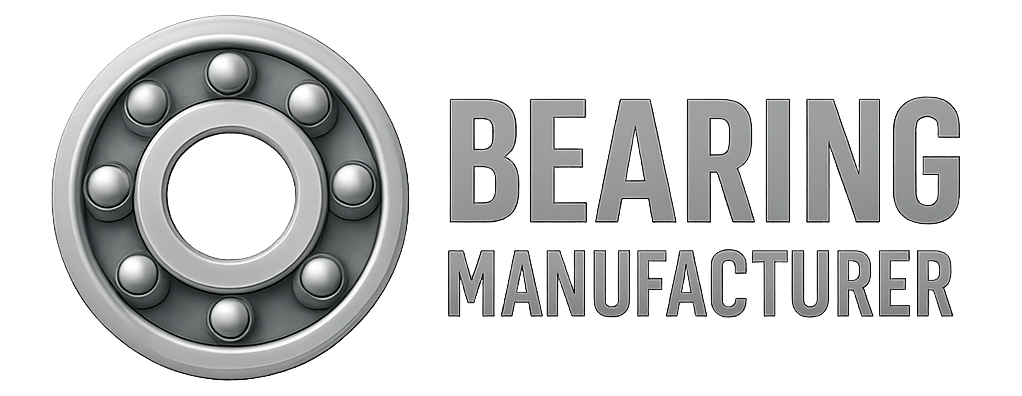Ensuring the correct grease volume in bearings isn’t just about following general rules—it’s about optimizing machine performance, extending component life, and avoiding costly downtime. Overgreasing or undergreasing can both cause serious issues. In this guide, we combine industry standards with engineering best practices to help you apply the right amount of grease, every time.
The Role of Grease in Bearing Performance
Grease serves as more than just a lubricant—it also protects bearing surfaces by:
-
Reducing friction and wear
-
Blocking out contaminants like dust and moisture
-
Dissipating heat during high-speed or high-load operation
-
Creating a protective barrier against corrosion
Proper greasing enhances bearing reliability, reduces maintenance intervals, and improves overall machine efficiency.
Key Factors That Affect Grease Quantity
Several variables influence how much grease a bearing needs:
| Factor | Influence on Grease Volume |
|---|---|
| Bearing Size & Type | Larger or heavily loaded bearings need more grease. Ball bearings typically require less than roller bearings. |
| Speed | Higher-speed bearings require less grease to prevent heat buildup from excess drag. |
| Temperature | High operating temperatures accelerate grease breakdown—requiring more frequent relubrication. |
| Operation Time | Continuous or intermittent use impacts grease degradation and relubrication intervals. |
| Vibration | High vibration demands thicker or more frequent greasing to cushion shocks. |
| Bearing Position | Vertical orientations often need more frequent greasing than horizontal ones. |
| Environmental Conditions | Dust, water, or chemicals require a thicker protective grease barrier. |
| Load | Heavily loaded bearings generate more internal pressure and thus need higher grease volumes. |
| Grease Type & Viscosity | Thicker greases may require less volume; lithium-based grease is a versatile, common choice. |
By evaluating these factors, you can strike the optimal balance—avoiding both overgreasing and undergreasing.
Standard Greasing Guidelines by Bearing Type
Deep Groove Ball Bearings
-
Recommended Fill: 25% to 35% of the internal volume
-
Why: This range minimizes internal friction while maintaining adequate lubrication. Overfilling increases heat and resistance.
Angular Contact Ball Bearings (High-Speed)
-
Recommended Fill: Around 20%
-
Why: Less grease reduces drag and heat buildup, critical for high-speed spindles and precision equipment.
👉 Tip: Always match grease type with bearing application—wrong grease can cause premature failure even at the correct volume.
Industry-Standard Grease Calculation Methods
SKF Formula
The SKF grease quantity formula provides a widely accepted approach:
Gq=0.114×D×BG_q = 0.114 \times D \times B
Where:
-
Gq = Grease quantity (oz)
-
D = Bearing outside diameter (in)
-
B = Bearing width (in)
Simplified Engineering Rule of Thumb
G=D×B10G = \frac{D \times B}{10}
Example:
A 3″ shaft with 1″ wide bearing → 0.3 oz grease
Grease Gun Stroke Method
-
One stroke per inch of shaft diameter (verify gun output)
-
Use a scale to calibrate your grease gun: 10 strokes ≈ 20–30g depending on the model
Practical Greasing Techniques
Acoustic Feedback Method
-
Grease until a reduction in bearing noise is observed.
-
If the noise rises sharply, it indicates overfilling—stop greasing immediately.
Pressure Feedback
-
Increased resistance on the grease gun handle signals that the bearing cavity is full.
Special Application Cases
High-Speed Machinery
-
Use Less Grease: Excess grease causes drag and overheating.
-
Flush Old Grease: Remove degraded grease before reapplying to avoid buildup.
-
Oil-Free Bearings: For ultra-low torque or clean environments, some bearings run without traditional grease.
Harsh Environments
-
Increase Fill to 40–50%: Creates a stronger barrier against water, dust, and chemicals.
-
Benefits: Improved sealing, corrosion resistance, and longer maintenance intervals.
Overgreasing vs. Undergreasing: The Risks
| Risk Type | Consequences |
|---|---|
| Overgreasing | – Increased temperature and energy use – Seal damage and premature failure |
| Undergreasing | – Inadequate protection from friction or contaminants – Over 80% of bearing failures are caused by poor lubrication |
Bottom line: Precise lubrication is more effective than “more is better.”
Conclusion
The right grease volume makes the difference between optimal performance and mechanical failure. From standard formulas to application-specific adjustments, this guide gives engineers and maintenance teams the tools they need to lubricate effectively. For long-lasting bearings and minimal downtime, apply the right type and right amount of grease—every time.
